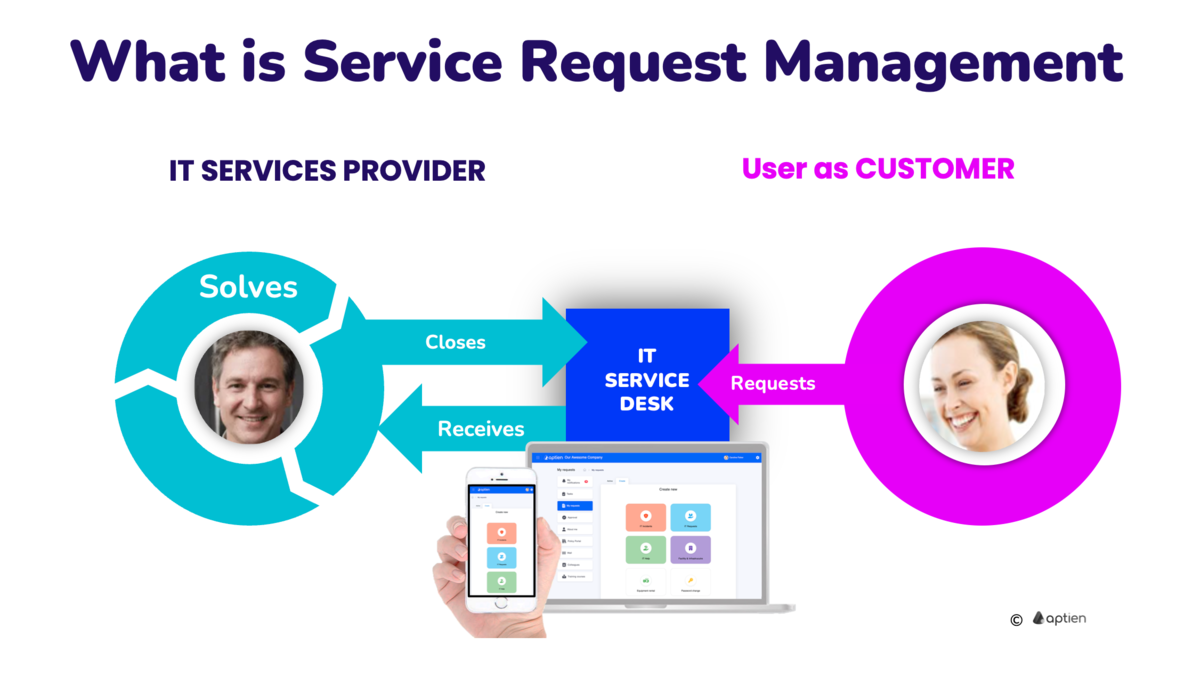Definition of Service Request Management
Service Request Management is essential part of IT Service management. Deals with user requests that do not relate to service failures. These requests are often routine, planned, and low-risk requests, such as new IT equipment, access requests, software installations, password resets, or equipment provisioning.
- Request processing is typically more predictable and less time-sensitive than incident management.
- Follows predefined workflows with structured steps, which makes handling requests straightforward and predictable.
- Often involves approval workflows, especially for requests that may have cost implications (e.g., ordering new equipment).
Service Request Management Features
Service Desk for End-users
- IT service Desk include Service Catalog & Self-service portal
- Allows users to submit requests, check statuses, and access automated options for simple requests (e.g., password resets).
- The service catalog provides a simple, user-friendly interface for browsing and requesting services. It’s designed to help users find the services they need quickly and submit requests with minimal effort.
- See the IT Helpdesk / Service Desk here
Service Catalog for IT managers
- Backstage for IT managers
- The catalog for IT managers includes a more comprehensive view, often with additional information to support decision-making and administration.
- The catalog contains additional information, such as technical details, dependencies, internal cost structures, SLAs, and compliance or security requirements.
- This information helps managers understand how services are delivered, track costs, and make data-driven decisions about service offerings.
- Lists all standard services and requests available, often visible to end-users so they can choose their needed service directly.
- See the IT service catalog here
Automated workflows of IT requests
- Predefined workflows for different request types to streamline the approval and fulfillment process.
- Approval to manage approvals, especially for requests with cost or security implications, and handle provisioning steps.
